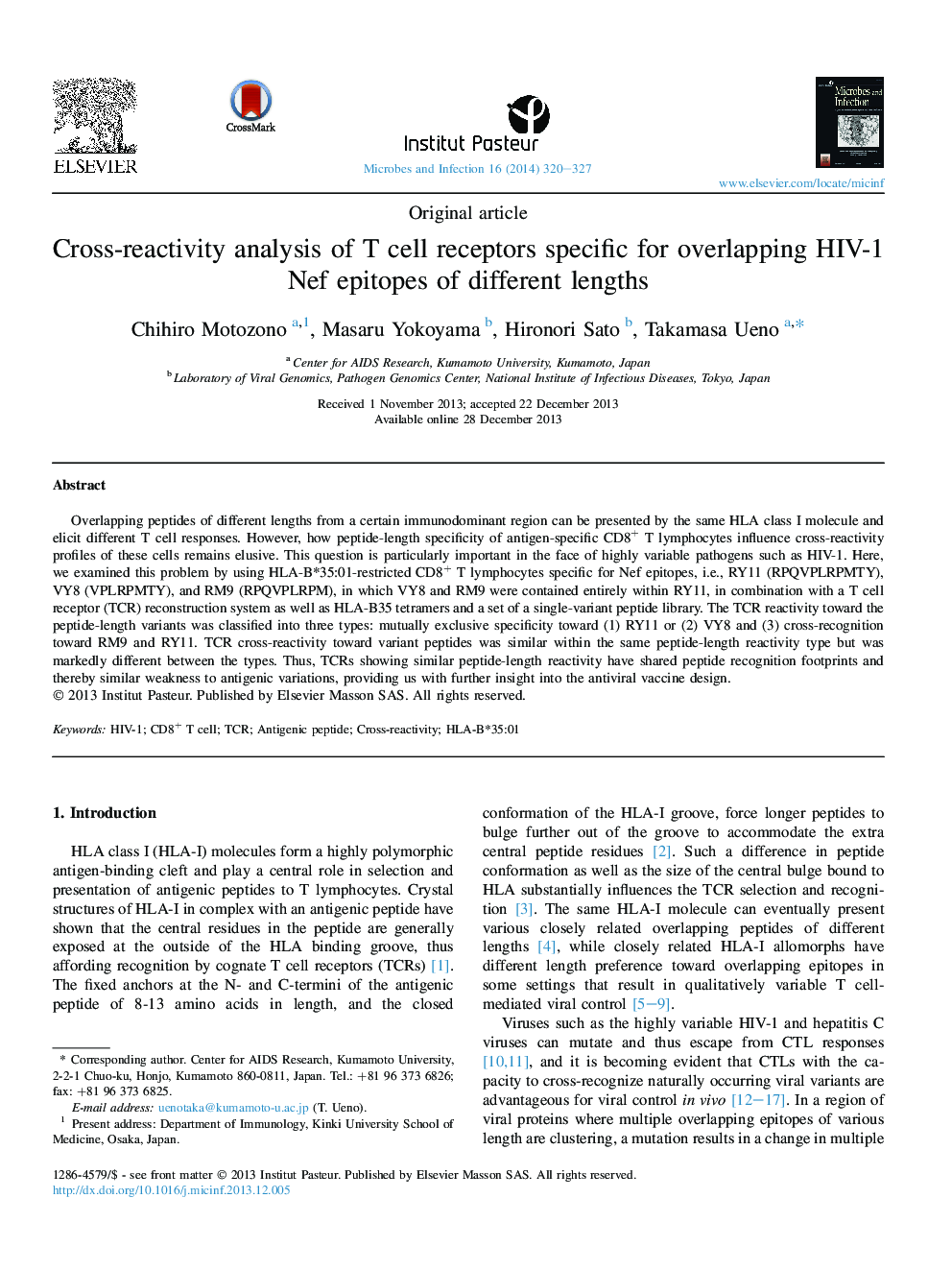| Article ID | Journal | Published Year | Pages | File Type |
|---|---|---|---|---|
| 3414789 | Microbes and Infection | 2014 | 8 Pages |
Overlapping peptides of different lengths from a certain immunodominant region can be presented by the same HLA class I molecule and elicit different T cell responses. However, how peptide-length specificity of antigen-specific CD8+ T lymphocytes influence cross-reactivity profiles of these cells remains elusive. This question is particularly important in the face of highly variable pathogens such as HIV-1. Here, we examined this problem by using HLA-B*35:01-restricted CD8+ T lymphocytes specific for Nef epitopes, i.e., RY11 (RPQVPLRPMTY), VY8 (VPLRPMTY), and RM9 (RPQVPLRPM), in which VY8 and RM9 were contained entirely within RY11, in combination with a T cell receptor (TCR) reconstruction system as well as HLA-B35 tetramers and a set of a single-variant peptide library. The TCR reactivity toward the peptide-length variants was classified into three types: mutually exclusive specificity toward (1) RY11 or (2) VY8 and (3) cross-recognition toward RM9 and RY11. TCR cross-reactivity toward variant peptides was similar within the same peptide-length reactivity type but was markedly different between the types. Thus, TCRs showing similar peptide-length reactivity have shared peptide recognition footprints and thereby similar weakness to antigenic variations, providing us with further insight into the antiviral vaccine design.
